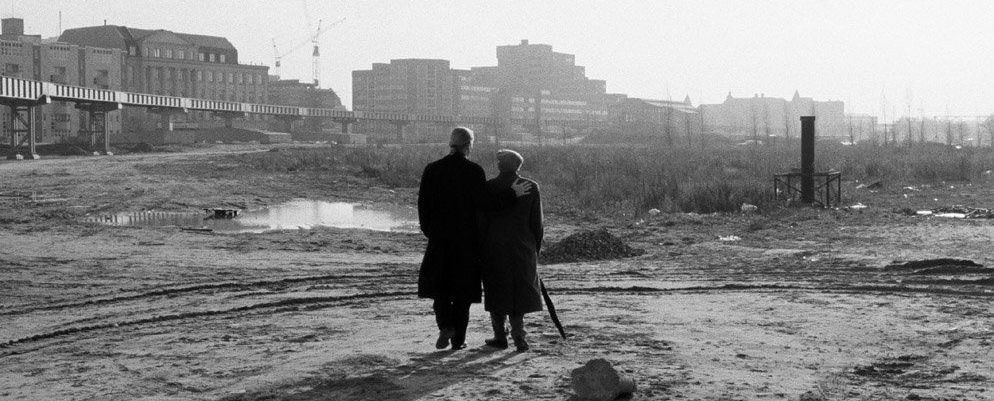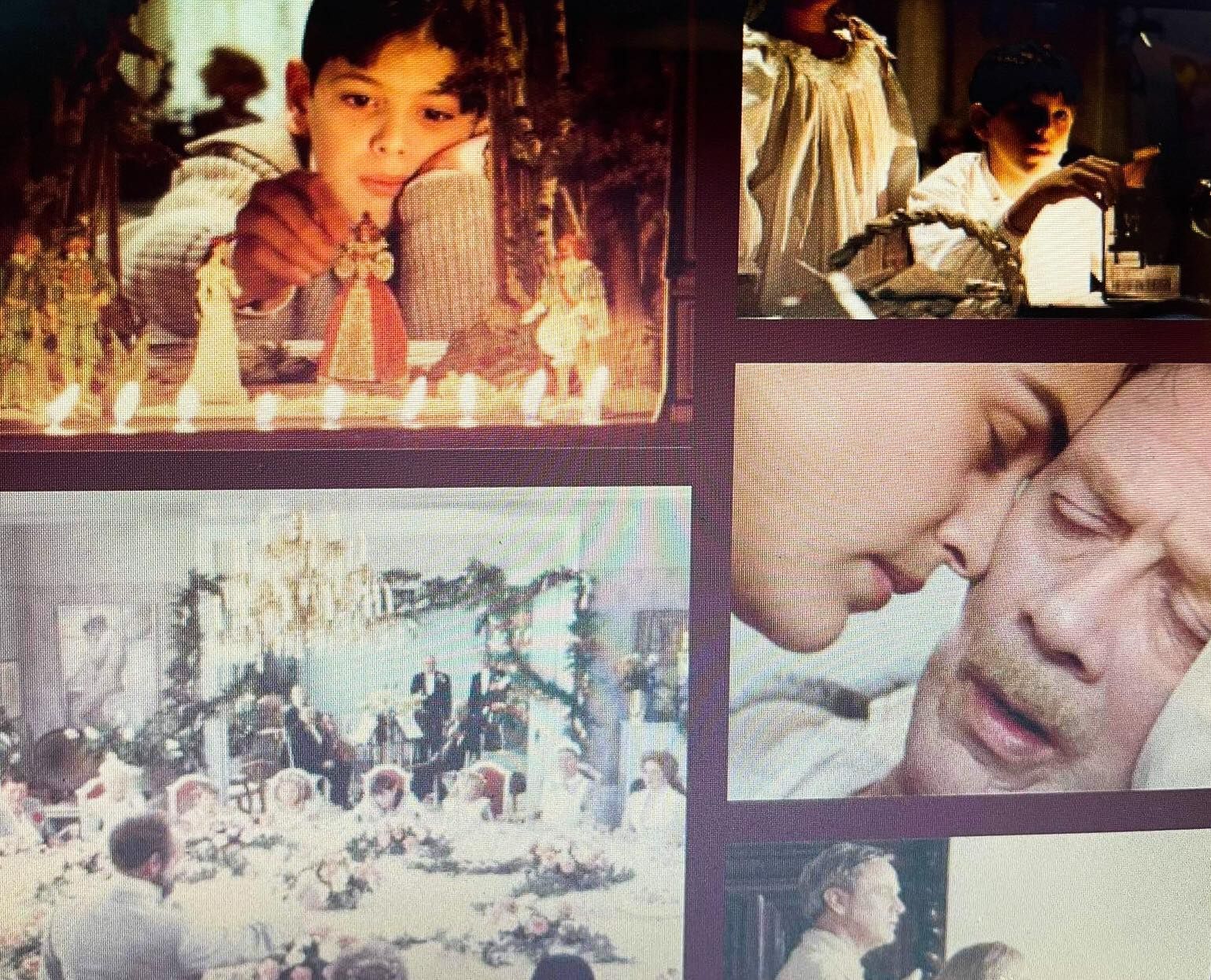Director: Sergio Leone
Music: Ennio Morricone
Camera:
The classic by Sergio Leone
Once upon a time in america
For Sergio Leone, "time is the great protagonist of my film. Time changes things and people, even against their will. People change over the course of their lives. Time often changes them into the opposite of what they once were."
The film premiered in GDR cinemas in mid-June 1986 and the cinematic epic was broadcast on GDR television on December 9, 1988. During the time when I had taken over my own department at the city film office in Dresden - based in the Olympia film theater - I learned how to project films, which was a recognized skilled worker training course in the GDR (skilled worker in reproduction technology). I had to complete the A and B licenses, i.e. practical training for stationary film systems and for mobile film systems in various cinemas. The theoretical training took place in the Dresden district film directorate, which was then located on what is now Hauptstrasse. I was able to learn how to project films from skilled workers in the large cinemas in Dresden - for example, I worked with the Czech Meo4 film projectors at the Schauburg, the Czech Meo5 projectors in the Filmtheater Ost and the Filmtheater Olympia, and I also got to know the Ernemann 7b in the Filmtheater Gittersee and the Dresden 1 from the Kleinen Theater Reick (and had to operate them - the Ernemann 7b and the Dresden 1 come from the traditional Dresden film projector technology).
These projectionists in Dresden were particularly experienced film fans. They actually argued about why Leone used which film material in films such as "Once Upon a Time in the West" (in the 1970s it was mainly Kodak, but the material was visibly yellowish) and they knew the films inside and out, including "Once Upon a Time in America". They were better experts than the cinema managers of the time, who mostly sat in administrative offices and pored over the accounts or in meetings until 5 p.m. (the first evening screening usually started at 5:30 p.m.).
Back to "Once upon a time in America": In the GDR, the Progress film distributor had the West German picture and dubbed version copied, but Progress drastically shortened the violent and rape scenes in the film, so that the heavily shortened version was also shown on GDR television. The ARD broadcast the uncut film on March 2, 1991. If you search for Once upon a time in America on YouTube today, you will mainly find the wonderfully orchestrated pieces by Ennio Morricone, who died a few months ago at the age of 93 and who wrote the film music for Sergio Leone.
For example, "Deborah's Theme" is masterfully composed with pathos, and given this romantic and pleasant melody, you would never suspect one thing: that this theme is also connected to a brutal rape in the back seat of a taxi. Deborah explains to Noodles, who has previously taken her to a romantic restaurant and dedicated verses from the Song of Solomon to her while lying on the beach, that she is going to Hollywood as an actress.
Sergio Leone has commented on some of the characters in the film in interviews, and so this portrayal of women and the violence against women is not only structurally related to the milieu that the film describes, but also Leone's point of view. "Don't you see women a little negatively?" Leone was asked by Der Spiegel in 1984.
"Deborah is the incarnation of the ambitious actress. She sacrifices every private satisfaction for her career. That's how actors are," Leone replied.
For Sergio Leone, "time is the great protagonist of my film. Time changes things and people, even against their will. People change over the course of their lives. Time often changes them into the opposite of what they once were."
In his film epic, Leone tells the story of 50 years of American history in the 1920s, 1930s and 1960s.
Leone portrays the gangsters Max and Noodles, who were friends as young boys and who made their way through life as petty criminals in the New York district of Brooklyn. After blackmailing and smuggling, Noodles was arrested for murder and spent many years behind bars. In the meantime, Max and the others had established themselves as gangsters during the Prohibition era and were involved in alcohol smuggling. Noodles was released from prison and saw the change in Max: he had developed into a tough and unscrupulous gang boss. The Prohibition era, and the lucrative way of earning money, was threatening to come to an end. In 1932/1933, the petty criminals were faced with the question of whether to enter the mafia business on a large scale: organized crime, corruption, politics. Noodles wants to quit the business to finally propose to Deborah, his childhood crush (with the profits from the forbidden bar they ran during Prohibition). The four gangster friends once filled a safety deposit box with 50 percent of all profits, which only the five of them - with Moe, who keeps the key - can access.
Max, Patsy and Cockeye are shot by the police during a break-in. They were obviously betrayed and because Noodles is not lying dead in the rain, suspicion falls on him. He hides from the killers who want to kill the traitor and tries to escape with the suitcase from the locker - but the suitcase is empty. Noodles buys a ticket for the first bus out of the city. He hides for 35 years. Then he receives an invitation from a politician to his old neighborhood and goes back in time. He stays in Moe's Bar and remembers - and he meets old acquaintances, like Deborah, who has since become an actress and is married to a politician. Noodles meets his friend Max, who was believed to be dead and is now a state secretary because he had negotiated an agreement with the police and received a new identity. Max's position as state secretary is threatened by a corruption scandal: he asks Noodles to kill him. Noodles refuses and wishes Mr. Bailey, aka Max, luck in the investigation so that his life's work does not end up in the trash. Then he leaves the property. He sees a garbage truck on the street - with the number 35 - and Max pursuing him, who has suddenly disappeared.
Told with a dense atmosphere, brilliant camera work and precise color and image design in a Brooklyn that has changed over 50 years, Leone manages to tell a gripping story about friendship and betrayal and, not least, about the Mafia. And since I have a soft spot for Mafia films: The union leader Jimmy Hoffa also appears in "Once a time in America". A masterful ensemble of actors from Robert de Niro to James Woods and Elizabeth McGovern as Deborah impresses with the great intensity of the individual characters.
As mentioned at the beginning, Leone's image of women is repulsive. Whether it's Peggy as a whore, the actress Deborah or Carol, who is shown as a crazy drinker: they function as mere accessories to the male society. Sergio Leone's image of women is patriarchal, chauvinistic, outdated and simply out of date.





